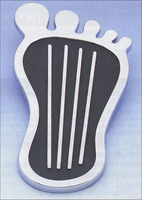Back in the 1930’s and lasting well into the 1950’s an innovative and brave group of tinkerers took it upon themselves to take stock roadsters and modify their engines in an unchecked passion of good old American ingenuity all in the name of speed. High compression heads, overhead-cam conversion and radical cams became part of the hot rod lexicon. Going faster was fun, and if you could get the fastest car, you’d get the social benefits of being popular. But taking technology risks to make something better is what set the real innovators apart from the rest of the crowd. Many of these innovations actually made it into the mainstream and became common practice production cars.
I can’t help but see a parallel universe emerging for Big Data. You have this existing infrastructure of database applications, servers, fabrics and storage that you need to “tune-up” for the fastest execution time. You need to “hot rod” your data. And THAT was the inspiration for our product, how can you take a data roadster and turn it into a data hot rod?!! IT innovators who can transform their legacy infrastructure to do MORE with their data are the next breed of innovators. But how do you go to your custom shop and find the right parts, or tool your own in your machine shop. That’s where we come in.
The GridIron TurboCharger is just that, the magic tuning ingredient you need to create your own data hot rod. To make sure you recognize its ability in your IT environment, we actually did paint it racing orange and added the flames. It really stands out, not only visually but working as a vital component in creating your data hot rod.
What are the hot rod problems we solve, the equivalent of high compression heads, cam-conversions and the like? First we address the toughest problem in front of IT today, where do I put my flash?!! Flash can go in so many places it makes your head spin, and the more places you put it, the harder it is to manage it. Fusion IO is telling you to put it in your server, your storage array companies are saying to add it to their already overtaxed storage arrays and use tiering software to figure out your hot data and migrate it there. We say something much simpler, put SSD at the heart of your engine, between the server and storage and offload BOTH. Let us figure out your hot data in real time and place it in SSD available immediately to speed up your applications.
Customers who have deployed our appliances have seen their applications run times and reporting times on their data sets improve anywhere from 2x to 10x. How much is it worth to YOUR business if you can drive THAT much faster?!! I’m betting it is worth a lot. But we’re not charging a fortune for this technology to make it easier for you to see the real benefits and to make your infrastructure a data hot rod. And as a side benefit if you want to see how your app is tuned up, we have a graphical engine in our GridIron Management System (GMS) that lets you plot all kinds of data to see what benefit you are getting from front end to back end. You might learn a lot more about your application than you ever thought you could.
So come to our shop, get a TurboCharger installed in your data engine. If you don’t believe us, we’ll even let you test drive one. But trust me, if you see what our customers see, you won’t be putting it back in its box. Join our growing roster of customers and Put the Pedal to the Metal!!!

Herb Schneider
VP of Engineering and TurboCharger Enthusiast

